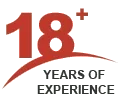Everest Base Camp vs Gokyo Lake Trek: Comparison between EBC and Gokyo Lake Trek
Trip Overview
The Everest Base Camp Trek and Gokyo Lake Trek are both popular treks in the Khumbu region of Nepal, each offering unique experiences. The Everest Base Camp Trek takes you to the foot of Mount Everest, providing iconic views and an immersive experience in Sherpa culture, while passing through famous villages like Namche Bazaar and Tengboche. The Gokyo Lake Trek, on the other hand, features stunning turquoise glacial lakes and panoramic views from Gokyo Ri, making it a great option for those seeking a less crowded route with equally breathtaking scenery.
Comparison between Everest Base Camp and Gokyo Lake Trek
Both treks offer breathtaking views of the world’s highest peaks and immerse you in the vibrant Sherpa culture. Here’s a comparison between Everest Base Camp and the Gokyo Lakes trek which help you choose which one might be better for you:
1. Trekking Duration:
. Everest Base Camp: Typically, an EBC trek lasts for 12-14 days, depending on your itinerary and acclimatization.
. Gokyo Lake: The Gokyo Lake trek is usually a bit longer, lasting 14-18 days, as it includes a detour to the Gokyo Lakes and the Gokyo Ri viewpoint.
2. Difficulty Level:
. Everest Base Camp: The EBC trek is considered moderate to difficult, with several days of continuous walking at high altitudes and the final ascent to Kala Patthar (5,545m/18,192ft) for the best view of Everest.
. Gokyo Lake: The Gokyo Lake trek is often considered more strenuous due to the inclusion of Gokyo Ri (5,357m/17,575ft), which is a higher altitude than Kala Patthar, and crossing the Cho La Pass (5,420m/17,782ft), which requires some technical skills.
3. Scenery and Highlights:
. Everest Base Camp: The main highlight is reaching Everest Base Camp and the ascent of Kala Patthar for views of Mt. Everest and other peaks like Nuptse, Lhotse, and Changtse. The trek goes through the famous Khumbu Valley, passing through Namche Bazaar and Tengboche Monastery.
. Gokyo Lake: The trek includes the spectacular Gokyo Lakes, the Gokyo Ri viewpoint, and the option to cross the Cho La Pass, which offers different perspectives of Everest and takes you through the quieter and more remote Ngozumpa Glacier. You’ll also get views of peaks like Cho Oyu, Makalu, and Lhotse.
4. Crowd Levels:
. Everest Base Camp: The Everest Base Camp trek is more popular and can be quite crowded, especially during the peak seasons of March to May and September to November.
. Gokyo Lake: The Gokyo Lake trek is less crowded as it diverges from the main EBC trail, offering a more serene and off-the-beaten-path experience.
5. Cultural Experience:
. Both treks provide a rich cultural experience with opportunities to explore Sherpa communities, and monasteries, and learn about local customs and traditions.
6. Physical Challenge:
. Everest Base Camp: The trek is physically demanding due to the high altitude and steep ascents, but the trail is well-managed and offers more facilities like lodges and teahouses.
. Gokyo Lake: This trek is physically more demanding with a higher pass crossing and a longer duration. It’s less crowded, which can also mean fewer facilities along the way.
7. Altitude Sickness:
. Both treks involve reaching high altitudes, but the Gokyo Lake trek may have a slightly lower risk of altitude sickness due to its longer acclimatization period and a slightly lower maximum elevation. However, crossing the Cho La Pass can be challenging for some.
8. Cost:
. The cost for both treks is relatively similar, covering permits, accommodation, food, and guides/porters. The Gokyo Lake trek might be slightly more expensive due to its longer duration and the additional cost of the pass.
9. Seasonal Variation:
. Both treks are best done in the spring (March to May) and fall (September to November) for the best weather and visibility. However, the Gokyo Lake trek might offer more reliable weather conditions and less crowded trails.
10. Accessibility:
. Everest Base Camp: The starting point for both treks is Lukla, but the EBC trek requires a slightly longer walk. You can also consider a helicopter tour if you’re short on time or prefer a less strenuous experience.
. Gokyo Lake: Starting from Lukla, you’ll trek through the Dudh Koshi Valley before reaching Gokyo. This trek offers more diverse landscapes and challenges.
Which Should You Choose?
Both treks are incredible and offer unique experiences, but the Gokyo Lake Trek might be better for those looking for a more challenging and less crowded experience with additional scenic highlights. If you’re more interested in reaching the base camp of Everest and the classic trek experience, the EBC trek is an excellent choice. Ultimately, it comes down to your fitness level, time constraints, and what you want to get out of your trekking experience.
In summary:
Choose EBC Trek if:
– You want to visit the iconic Everest Base Camp.
– You’re okay with crowded trails.
– Experiencing the Khumbu region’s highlights is a priority.
Choose Gokyo Lake Trek if:
– You prefer quieter, less-traveled routes.
– You’re drawn to stunning glacial lakes and unique landscapes.
– You want equally breathtaking views of Everest without the crowds.
Combination Option:
EBC + Gokyo Lakes Trek: If you have more time and are physically fit, you can combine both treks in a single trip which typically takes 16-18 days. It includes crossing the challenging Cho La Pass (5,420m) but offers the best experience.
Please contact us if you need details on itineraries, preparation, or tips for both treks.





